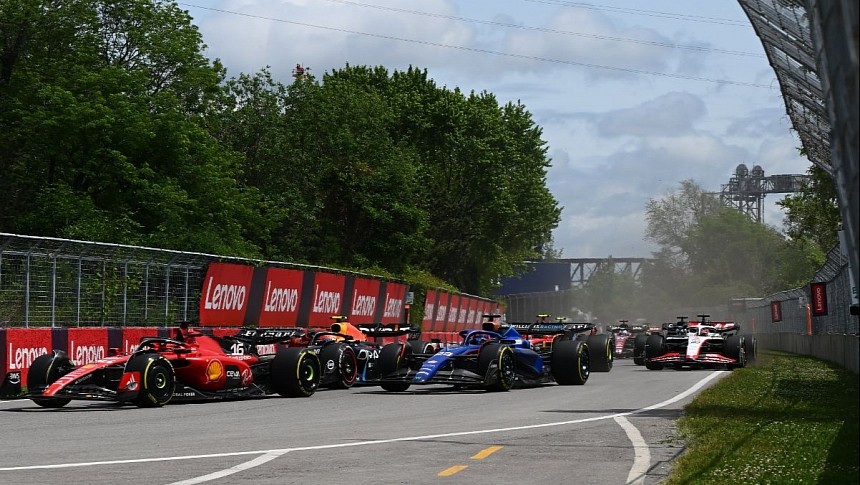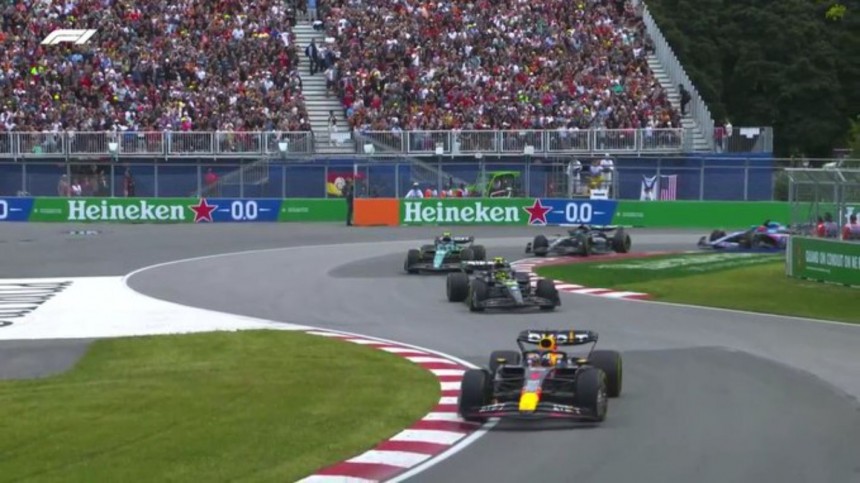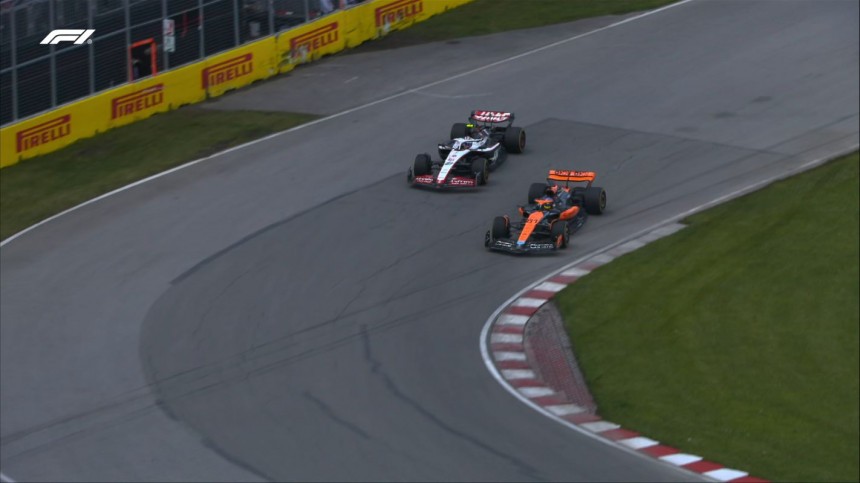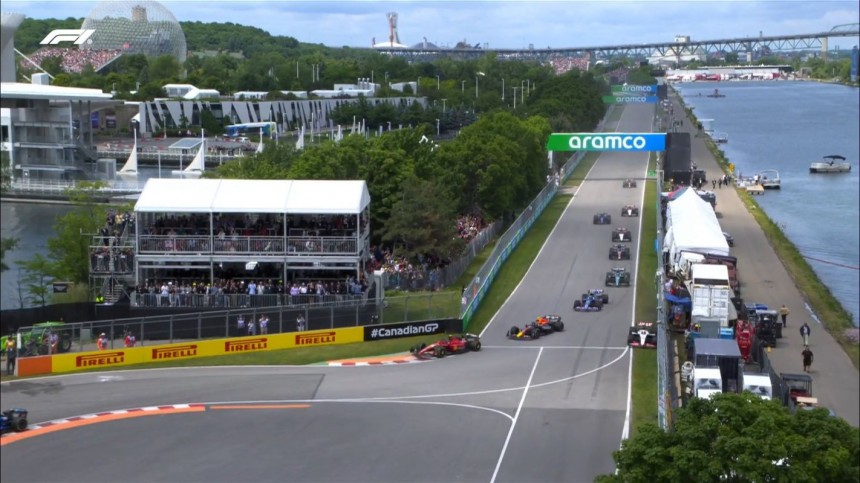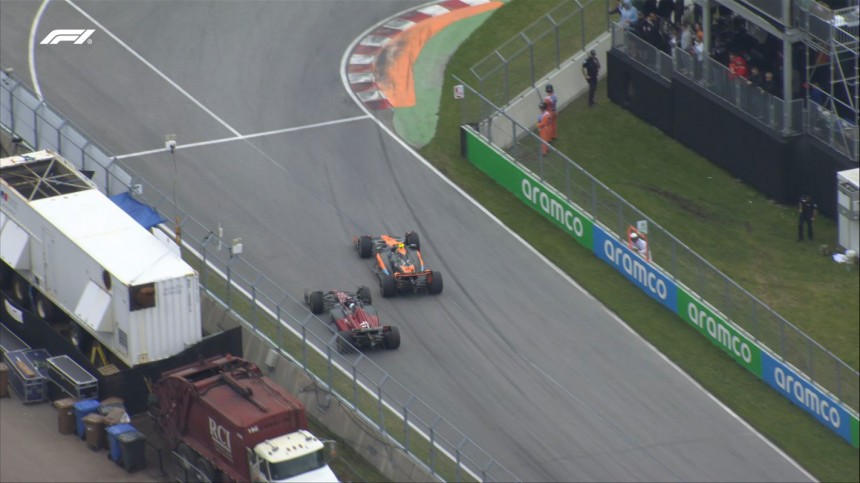Apparently, more and more Formula 1 fans are saying that the thrill of overtaking has been stifled in the current season. Curiously, didn't the Formula 1 teams, after heavy investment and diligent efforts, agree to embrace new regulations precisely to spur more on-track duels and breathtaking overtakes? Does the thrill of overtaking warrant an 'easy mode'? Formula 1 is caught up in this problem.
About 18 months ago, fresh rules were unfurled on the grid, with the ambitious objective of densifying the competition, amplifying the spectacle by facilitating cars to tail each other and perform electrifying doggedly overtakes.
However, these revolutionary regulations have presided over 30 races thus far. Red Bull has savored the taste of victory in a staggering 25 of these, accounting for an 83% success rate. Max Verstappen broke records, collecting laurels in an unprecedented number of races on his way to clinch his second world championship in 2022. And if current form is any indication, he's fiercely on the hunt to surpass that feat this year, while Red Bull's competitors are merely watching from the rear-view mirror.
These stark realities clearly indicate that the new rules have veered off the intended course. And if raw numbers don't suffice, listen to the racers themselves: grumblings about the stiffening challenge of overtaking have surfaced as we enter 2023.
A mere four races into the season, the overtaking predicament already took center stage during the drivers' briefing at the Azerbaijan Grand Prix. Public discourse followed suit after a somewhat lackluster race, sparking debates that show no signs of abating.
Conversations often orbit around granular issues. For instance, the FIA's decisions to truncate the zones for employing the Drag Reduction System (DRS) – an overtaking aid – are questioned, especially considering the escalating difficulty of overtaking. However, this query prompts a cascade of broader concerns.
Is overtaking truly more challenging this year? If yes, what's the culprit? Are the newly minted rules responsible for this impasse? And if they are indeed flawed, what corrective measures can be taken, not just as a short-term fix but as a strategic blueprint for the future? Let's not forget: Formula 1 is racing towards another regulation paradigm shift in 2026. If the current rules are floundering, what assurance can anyone harbor that the next rulebook will deliver better outcomes?
The latest regulations were crafted with a specific intent: minimize the 'dirty air' trailing cars, enabling the pursuing driver to retain a larger chunk of their vehicle's performance. The strategy to achieve this involved curtailing cars' capacity to 'out-wash' the surrounding air — a principal tactic used by earlier cars to generate downforce — and divert any turbulent air upwards, keeping it clear of the vehicle in pursuit.
This approach bore some fruit last year. Indeed, cars retained a noticeably larger part of their overall downforce when tailing another vehicle, making it easier to maintain proximity. However, an unforeseen outcome of this new design became evident last year – the slipstream effect was diminished as the drag of the cars reduced. Hence, although following became more straightforward, it didn't necessarily translate into easier overtaking.
Consequently, the Drag Reduction System (DRS) was just as critical for enabling overtakes in 2022 as it had been earlier, even though rule-makers had initially hoped that the new generation of cars might eliminate the need for DRS altogether. DRS, seen as a necessary evil since its introduction in 2011, was an artificial mechanism designed to combat the challenging nature of overtaking, with an aim to make it achievable, not inevitable.
This amalgamation of factors has ignited the current debate regarding the DRS zones' length. The governing authority, the FIA, has been utilizing 2022 data to determine the appropriate length of the DRS zone for each race. The drivers, however, contest that this data has become obsolete due to the evolution of the cars.
In 2019, the average qualifying gap that separated the fastest and slowest teams was 3.295 seconds. By 2021, the twilight of the old regulations, the disparity shrank to 2.578 seconds. So far this year, it's even less than 2 seconds. Yet, these figures don't represent an apples-to-apples comparison, as each year from 2019 to 2021 showcased a team that underperformed considerably more than the rest - Williams in 2019 and Haas in 2020 and 2021. In 2019, Williams lagged a hefty 2.3 seconds behind the penultimate slowest car, while Haas trailed by 1.4 and 1.6 seconds in the subsequent years.
A more equitable comparison would involve examining the spread among the nine fastest cars from the three years preceding the rule change, dismissing the slowest, notably since Haas halted car development in 2020 to focus on the new regulations. Under this framework, the field spread was a tad over 1.9 seconds in 2019, 2020, and 2021, matching that of 2022 before the enhancement in 2023.
Admittedly, the new rules have compacted the field somewhat. Yet, this development hasn't conspicuously uplifted the racing standard or hindered a single team from developing an ostensibly unassailable lead. The rules have succeeded in certain aspects - the field is denser, and cars can tail each other more closely. But they have failed elsewhere - overtaking isn't noticeably easier, and one team reigns supreme.
Add to this the fact that the new cars, leveraging underfloor aerodynamics for downforce, necessitate a flat, stable 'platform,' thus requiring stiffer handling. Active aerodynamics have entered the conversation, not in the context of overtaking, but to mitigate drag, especially since the new engines will lose efficiency following the scrapping of the MGU-H, the hybrid system's turbo energy recovery component.
The FIA's approach to the new chassis rules is to adapt the current regulations, maintaining ground effect usage. The efficacy of the new rules, and the necessity for a comprehensive reassessment, remains inadequately explored. If such a revision is on the cards, time is rapidly dwindling. Broader questions surface from this dialogue. Essentially, what should F1 aspire to be? The consensus is to bring the field closer for more diverse winners, improve the spectacle through easier - but not overly easy - overtaking, and test drivers to push their limits constantly.
During the same press conference, Russell urged Pirelli for a "consistent tire" that would "fall off the cliff" after a certain point, leading to more pit stops and diverse race strategies. He clarified that "degradation" meant performance loss due to wear, not overheating.
Yet, these distinct issues are often blended in F1, not least by Pirelli itself. In the meantime, F1's Twitter feed celebrated the 2005 San Marino Grand Prix before the Baku race, a memorable race where Alonso fended off Schumacher's faster Ferrari for numerous laps, now recognized as one of the most epic defensive drives. Villeneuve's final victory at the 1981 Spanish Grand Prix, where he staved off four trailing cars for most of the race, is another such instance.
If overtaking becomes "slightly too easy," such remarkable drives would be extinct. Some argue DRS has already made them extinct. Whether this is the right course is a question that those in power seem to be overlooking.
However, these revolutionary regulations have presided over 30 races thus far. Red Bull has savored the taste of victory in a staggering 25 of these, accounting for an 83% success rate. Max Verstappen broke records, collecting laurels in an unprecedented number of races on his way to clinch his second world championship in 2022. And if current form is any indication, he's fiercely on the hunt to surpass that feat this year, while Red Bull's competitors are merely watching from the rear-view mirror.
These stark realities clearly indicate that the new rules have veered off the intended course. And if raw numbers don't suffice, listen to the racers themselves: grumblings about the stiffening challenge of overtaking have surfaced as we enter 2023.
A mere four races into the season, the overtaking predicament already took center stage during the drivers' briefing at the Azerbaijan Grand Prix. Public discourse followed suit after a somewhat lackluster race, sparking debates that show no signs of abating.
Is overtaking truly more challenging this year? If yes, what's the culprit? Are the newly minted rules responsible for this impasse? And if they are indeed flawed, what corrective measures can be taken, not just as a short-term fix but as a strategic blueprint for the future? Let's not forget: Formula 1 is racing towards another regulation paradigm shift in 2026. If the current rules are floundering, what assurance can anyone harbor that the next rulebook will deliver better outcomes?
The latest regulations were crafted with a specific intent: minimize the 'dirty air' trailing cars, enabling the pursuing driver to retain a larger chunk of their vehicle's performance. The strategy to achieve this involved curtailing cars' capacity to 'out-wash' the surrounding air — a principal tactic used by earlier cars to generate downforce — and divert any turbulent air upwards, keeping it clear of the vehicle in pursuit.
This approach bore some fruit last year. Indeed, cars retained a noticeably larger part of their overall downforce when tailing another vehicle, making it easier to maintain proximity. However, an unforeseen outcome of this new design became evident last year – the slipstream effect was diminished as the drag of the cars reduced. Hence, although following became more straightforward, it didn't necessarily translate into easier overtaking.
This amalgamation of factors has ignited the current debate regarding the DRS zones' length. The governing authority, the FIA, has been utilizing 2022 data to determine the appropriate length of the DRS zone for each race. The drivers, however, contest that this data has become obsolete due to the evolution of the cars.
In 2019, the average qualifying gap that separated the fastest and slowest teams was 3.295 seconds. By 2021, the twilight of the old regulations, the disparity shrank to 2.578 seconds. So far this year, it's even less than 2 seconds. Yet, these figures don't represent an apples-to-apples comparison, as each year from 2019 to 2021 showcased a team that underperformed considerably more than the rest - Williams in 2019 and Haas in 2020 and 2021. In 2019, Williams lagged a hefty 2.3 seconds behind the penultimate slowest car, while Haas trailed by 1.4 and 1.6 seconds in the subsequent years.
A more equitable comparison would involve examining the spread among the nine fastest cars from the three years preceding the rule change, dismissing the slowest, notably since Haas halted car development in 2020 to focus on the new regulations. Under this framework, the field spread was a tad over 1.9 seconds in 2019, 2020, and 2021, matching that of 2022 before the enhancement in 2023.
Add to this the fact that the new cars, leveraging underfloor aerodynamics for downforce, necessitate a flat, stable 'platform,' thus requiring stiffer handling. Active aerodynamics have entered the conversation, not in the context of overtaking, but to mitigate drag, especially since the new engines will lose efficiency following the scrapping of the MGU-H, the hybrid system's turbo energy recovery component.
The FIA's approach to the new chassis rules is to adapt the current regulations, maintaining ground effect usage. The efficacy of the new rules, and the necessity for a comprehensive reassessment, remains inadequately explored. If such a revision is on the cards, time is rapidly dwindling. Broader questions surface from this dialogue. Essentially, what should F1 aspire to be? The consensus is to bring the field closer for more diverse winners, improve the spectacle through easier - but not overly easy - overtaking, and test drivers to push their limits constantly.
During the same press conference, Russell urged Pirelli for a "consistent tire" that would "fall off the cliff" after a certain point, leading to more pit stops and diverse race strategies. He clarified that "degradation" meant performance loss due to wear, not overheating.
If overtaking becomes "slightly too easy," such remarkable drives would be extinct. Some argue DRS has already made them extinct. Whether this is the right course is a question that those in power seem to be overlooking.
